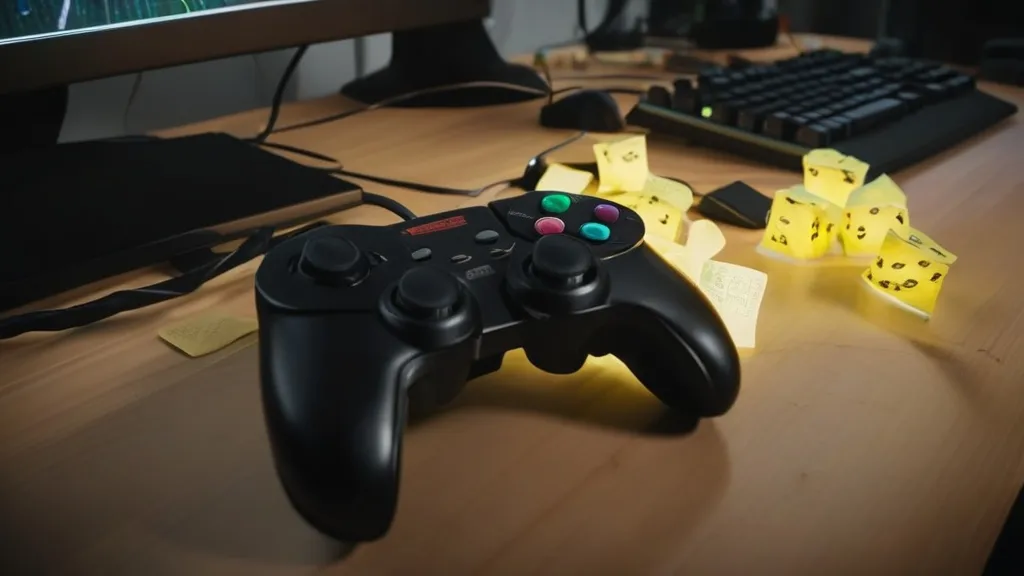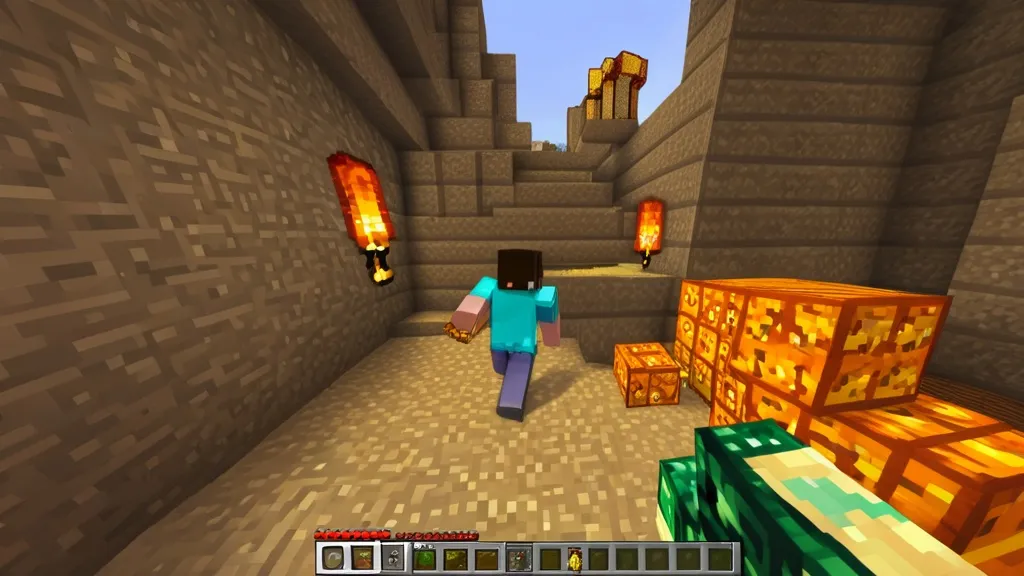So you want to learn how to speedrun games. Cool. Risky choice for your sleep schedule, but cool. In my experience, the basics come down to a few things: routing (the plan), movement tech (how you actually move fast), splits (your segment times), RNG (random stuff), and raw willpower. I’ve chased PBs (personal bests), I’ve done Any% and glitchless, I’ve watched my world record dreams fall apart to a missed frame-perfect jump. Speedrunning tips are everywhere, but the hard part is building habits you can stick with. And yeah, I’ve always found that sequence breaks, skips, and little time saves matter more than “being naturally good.” Nature helps. Not required.
Why I Do This To Myself

I started when I was in college. Had more time than sense. I saw a run on a forum, thought, “I can beat that.” Spoiler: I couldn’t. Not at first. My first “serious” attempt took two weeks, a stack of sticky notes, and one very angry thumb. But I got the bug.
Speedrunning, to me, feels like figuring out a puzzle with a timer strapped to your face. You don’t need to be a robot. You need patience, a plan, and a reset button. Lots of resets. Reset city. Population: you.
What Is Speedrunning (And Why It’s Not Just Mashing A)
If you’re brand new, the quick definition is simple: beat the game as fast as possible under set rules. That’s it. The rules change by category: Any% lets most glitches fly; glitchless pretends the game is honest (it’s not); 100% grabs everything and melts your soul.
If you want a clean overview, the speedrun page gives a decent history. It’s basic, but fine for getting the idea. Also, there’s the whole TAS thing — tool-assisted runs — which are like science experiments for games. Not real-time, but great for learning lines and seeing what’s possible. Read more here if you want the nerd deep dive: tool-assisted speedrun.
Choosing A Game Without Ruining Your Life (Too Much)
Pick a game you actually like. I know, revolutionary. Don’t pick the “top game” just because it’s popular. That’s how you burn out. What I think is this: it should be fun even when you’re failing. Because you will fail. A lot.
Things I Check Before I Commit
- Length: Can I do runs in under an hour? Under 30 minutes is even better for beginners.
- Movement: Does it feel good to move? If the character is a tank, your patience will die.
- Community: Is there a Discord? Guides? Old runs to study?
- Categories: Any%? Glitchless? 100%? No Major Glitches? Pick one that fits your time and mood.
- RNG: Some random is fine. Full coin-flip runs? Rough.
Common Categories, In Plain English
| Category | What It Means | Good For | Time Cost | Headache Level |
|---|---|---|---|---|
| Any% | Beat the game by any allowed means. Glitches welcome. | Fast runs, big tricks, big skips. | Low to medium | Medium to high |
| Glitchless | No glitches. Just movement and clean play. | Learning fundamentals and lines. | Medium | Medium |
| 100% | Get all items or goals, as defined by the rules. | Completion lovers, route nerds. | High | High |
| No Major Glitches | Small bugs are okay, huge breaks are not. | Balanced challenge. | Medium | Medium |
The Tools You Actually Need (And The Ones You Don’t)
Don’t overthink gear. You don’t need a $300 controller and a shrine to gold splits. Here’s what matters.
Timer And Splits
- A timer app. LiveSplit on PC is the standard. Set up splits by level or major event.
- Start simple. 5–10 splits for a short game. Don’t split every sneeze.
- Color coding helps. Make time saves clear so your brain knows when to push.
Notes You’ll Actually Read
- Use a simple doc or notepad. Don’t write a textbook.
- Write step-by-step like: “Level 2: grab key, ladder clip, reset if miss clip 3x.”
- Put bold marks for resets or backup strats.
Recording And VODs
- OBS or your console’s built-in capture. Quality doesn’t need to be movie-grade.
- Record your attempts. Watch the fails. That’s where you learn.
- If you stream, cool. If not, also cool. You don’t need chat to go fast.
Settings That Save Sanity
- Turn off in-game tips and auto-aim (if it messes with movement).
- Use a consistent controller. Don’t swap every week.
- Cap FPS if your game behaves weird at high frames.
Routing Without Overcomplicating It
Routing is your plan. The order you do things. Where you reset. Where you try the big skip. I like to learn a safe route first, then swap in dangerous strats when my hands stop shaking.
Where I Learn Routes
- Watch top VODs at 0.5x speed. Slow it down. See the inputs.
- Read old forum posts. Ancient posts often hide gold.
- Ask in community channels for “beginner route” notes.
Sequence Breaks Are Candy (But Don’t Eat The Whole Bag)
Sequence breaking is where you do things out of order. It feels like cheating, but it’s allowed if the category allows it. It’s also how a lot of Any% strats are born. If you’re curious about the idea in general, the wiki on sequence breaking is pretty neat.
Try one big skip at a time. Don’t throw a dozen fresh tricks into a route and then wonder why your run explodes on level 3. I’ve done it. Didn’t help.
Practice Like You Mean It
You don’t save time by hoping. You save time by drilling. Break the game into small parts. Practice those parts. Then link them.
Drills That Actually Work
- Movement laps: Run the same room 10 times. Get consistent. Then get faster.
- Skip reps: Practice a clip 20 times. No full runs. Just the clip.
- Reset rules: Give yourself 3 tries per trick. If you miss, move on. Keeps your brain fresh.
- Gold hunting: Focus one segment at a time until you get a gold split. Celebrate. Then move to the next.
Micro vs. Macro
- Micro: Tiny tricks, one room, one jump. Short sessions.
- Macro: Full route runs. Long sessions, endurance practice.
A Simple Weekly Plan
| Day | Focus | Time | Notes |
|---|---|---|---|
| Mon | Movement drills | 45–60 min | Lines, turns, slides |
| Tue | Skip practice | 45–60 min | 1–2 key skips only |
| Wed | Half runs | 60–90 min | First half of route |
| Thu | Boss fights | 30–45 min | Patterns, quick kills |
| Fri | Full runs | 90–120 min | 2–3 attempts |
| Sat | VOD review | 30–60 min | Find 2 time saves |
| Sun | Off or fun category | As you like | Keep it light |
Reset Discipline (A Love Story)
I used to reset every time my first split wasn’t gold. Don’t be me. Set simple rules:
- Only reset before split 3 unless something catastrophic happens.
- If you’re on PB pace, keep going. Even with small mistakes.
- Use backup strats when nerves kick in. Safe time is still time saved.
RNG And Coping With Chaos
Random stuff happens. Enemy spawns, item drops, cycles. You can’t control all of it, but you can control your reaction. Learn patterns. Know backup strats. Accept that sometimes your run dies to a coin flip. It’s okay. We’ve all yelled at a boss for deciding it’s nap time mid-fight.
Watching Runs Without Getting Discouraged
Top runners look smooth because they’ve failed a thousand times. Watch their hands if you can. Notice the rhythm. They’re not rushing. They’re calm. That’s the secret. Calm hands, clean lines, and knowing when to go for a risky strat.
Community: Where The Good Stuff Lives
Find the game’s Discord or forum. Old guides, weird tech, and people who already solved your problem — it’s all there. I learned half my best strats from someone’s throwaway comment at 2 a.m.
Big marathons are also great for learning. If you’ve seen Games Done Quick, you know the vibe: charity, hype, and runners showing off absurd tech. Good place to spot routing ideas and safe marathon strats you can copy for consistency.
Old-school heads like me still browse archives too. You’ll find classic runs, weird categories, and history. And sometimes the exact backup strat you needed. Also, if you ever worry about what I track here, I keep it boring and simple — see my privacy policy.
TAS vs. RTA (And Why You Should Care A Little)
TAS (tool-assisted) runs are not cheating. They’re lab work. They show what’s possible with perfect inputs. Real-time (RTA) is what you and I do. We mess up. We breathe. But I still study TAS routes to understand the best lines and setups. Again: tool-assisted speedrun if you want more detail. Use it for learning, don’t compare your hands to a script. That way lies madness.
The Mental Game (AKA Don’t Tilt Yourself)

- Short sessions beat marathons, most days.
- Eat. Drink water. Shaky hands lose time.
- One change at a time. Don’t swap everything in a single day.
- When you PB, stop. Save the win. Your brain remembers the good finish.
Advanced Stuff Without The Jargon Wall
Movement Tech
- Lines: Shortest path isn’t always fastest. Smooth turns are faster than sharp zigzags.
- Cycle timing: Some levels have moving platforms or doors. Learn the “good cycles” and plan around them.
- Buffering: For frame-tight tricks, preload inputs during animations.
Clips And Skips
- Visual cues: Use wall markings, shadows, or UI to line up a clip. Eyeballing is pain.
- Audio cues: Footstep number, sound effects, attack barks — they help time actions.
- Backups: If the big skip fails twice, do the safer one. A completed run beats a graveyard.
Checklist Before Attempts
- Timer reset and splits visible
- Notes open to boss patterns
- Hands warm (yes, actually warm them)
- Controller cable checked (trust me)
My Favorite Dumb Mistakes (So You Can Dodge Them)
- Not practicing endgame. I’d nail early game, then choke on the last boss. Fix: practice last 20% more than the first 20%.
- Changing settings mid-grind. New deadzone felt “off” for a week. Fix: set once, change rarely.
- Over-splitting. 40 splits for a 25-minute game. Why. Fix: fewer splits, clearer focus.
- No backups. One failed skip, run dead. Fix: write backups in notes.
- Copying top routes too fast. They’re using strats you can’t hit yet. Fix: ladder up in steps.
If You’re Googling It Right Now
If you’re literally typing how to speedrun games into a search bar, here’s my no-fluff starter pack. Pick a short game you love. Find the Any% beginner route. Learn basic movement first. Set simple splits. Practice two key skips. Do three full attempts. Watch your VOD, find one time save, and repeat. That’s it. Not fancy. Very effective.
Streaming Or Not Streaming
I stream sometimes. It helps me focus. Chat keeps me from spiraling during bad RNG. But offline is fine too. Don’t feel pressured. Leaderboards don’t care if you had five viewers or none. They care if your run was clean and valid.
Etiquette And Posting Runs
- Read category rules before you grind. Saves you pain later.
- Show full VOD if the category needs it. Keep splits visible.
- Be chill in Discord. Ask short, clear questions. Show your attempts.
When To Move On
I have a rule. If I’m angry for three sessions in a row, I change something. New category. Safer route. Different game. Burnout kills progress. A small pivot keeps you in the hobby longer than “one more try” rage.
Little Things That Add Up
- Menuing: Practice menus. You waste minutes there.
- Camera control: Smooth camera means faster lines.
- Cutscene skips: Sounds dumb, saves time. Memorize them.
- Audio: Use game sounds to time actions, not just visuals.
- Hands: Stretch fingers. Shake out tension. Yes, now.
Real Talk About “Skill”
People think top runners are built different. Maybe a bit. But consistency beats talent most days. The player who shows up, drills, and keeps notes? That’s the player who PBs. Not the player who prays for perfect RNG and resets on split one forever.
On Inspiration And Not Making It Weird
I like watching marathons, especially GDQ runs, because they remind me that this whole thing is about having fun. Pushing yourself is fine. Being miserable over a hobby? Eh. I’ll pass.
One Last Mini-Guide (Print This In Your Head)
- Pick: short, fun game. Beginner route.
- Practice: movement and two key skips.
- Plan: reset rules, backups written down.
- Attempt: three runs, then VOD review.
- Tweak: one change per session. Not five.
- Repeat: keep it steady. PB will come.
FAQs (from my inbox and random DMs)
- Do I need a fancy controller or keyboard? No. Use what’s comfy and consistent. The best controller is the one you don’t think about.
- How long before I get a PB? Usually a week or two of real practice on a short game. Sometimes a day. Sometimes a month. Depends on how much you drill.
- Is watching TAS useful for me? Yep. Use it to learn lines and ideas. Don’t compare your runs to it. It’s a tool, not the goal.
- Should I start with Any% or glitchless? If your game has wild glitches, start glitchless to learn movement. If Any% is simple and short, go for it.
- How do I stop tilting after a bad run? Stand up. Drink water. Do a chill category or practice room. End on a small win, not a meltdown.
I could keep going, but you get it. Go practice your lines. And please, label your splits this time. Your future self will thank you. Or at least complain less.

James Carter: Your competitive edge. I cover Patch Notes, Speedruns, Battle Royale Strategy, Multiplayer Trends, and Game Dev Insights. Let’s get into it!




Love the emphasis on choosing a game you enjoy! Speedrunning should be fun, even through failures.
Speedrunning is all about strategy, practice, and patience. The thrill of hitting that PB is unbeatable!
Speedrunning is like solving a puzzle with a timer. Patience, plan, and reset button = key to success!
Love the emphasis on choosing a game you actually enjoy – burning out is the opposite of fun!
How do you cope with the chaos of RNG elements in your speedruns?